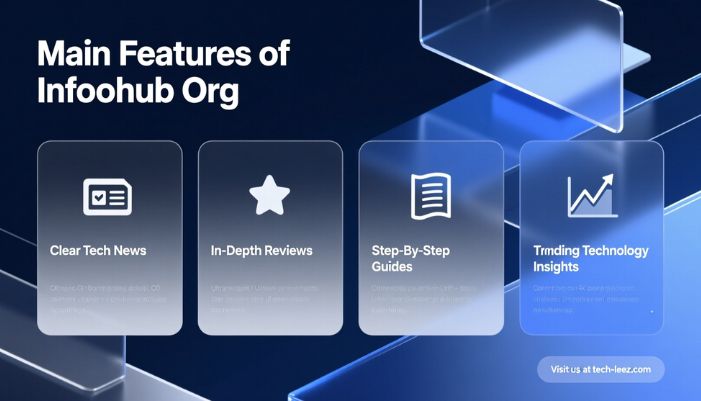
Introduction to iOS 26: A New Era in Mobile Technology
The release of iOS 26 marks a significant milestone in the evolution of Apple’s mobile operating systems. As the tech community eagerly awaits this update, the anticipation surrounding iOS 26 has reached new heights among both users and developers. Each iteration of iOS carries the weight of expectations, and this version is no different, promising a host of enhancements that aim to redefine user experience.
One of the principal goals of the iOS 26 features is to significantly enhance usability. Apple has always focused on creating a seamless interface, and with this latest update, the company aims to refine this aspect further. The user-oriented improvements are expected to make navigation more intuitive, thus allowing users to interact with their devices more efficiently. Beyond improving everyday functionality, the introduction of iOS 26 features is poised to broaden accessibility, ensuring that all users can enjoy the new functionalities regardless of experience or physical abilities.
Performance is another cornerstone of the upcoming iOS 26 release. Apple has committed to optimizing the operating system, which could result in faster operation and reduced battery consumption. This not only boosts device longevity but also augments the overall customer satisfaction associated with hardware performance. Developers are equally enthusiastic about the opportunities that iOS 26 will present. Enhanced developer tools and frameworks are expected to facilitate the creation of innovative applications, pushing the boundaries of what is possible on mobile devices.
In essence, iOS 26 is set to introduce remarkable features that cater to the evolving landscape of mobile technology. As users and developers alike wait in anticipation, it is clear that this update will not just be an incremental improvement, but rather, a significant leap forward in the realm of mobile operating systems.
Key iOS 26 Features That Transform User Experience
The release of iOS 26 introduces a multitude of features aimed at significantly enhancing user interaction and functionality. One of the standout features is the enhanced personalization options. Users can now tailor their home screens more than ever, with customizable widgets that provide at-a-glance access to vital information. This increased level of personalization enables users to curate their digital experience in a way that best suits their needs and preferences, promoting efficiency and satisfaction.
Another notable addition is the advanced safety measures integrated into iOS 26. These improvements include enhanced privacy settings that allow users to control data sharing more effectively. The new privacy dashboard gives users insights regarding which apps collect their information, empowering them to make informed choices about their digital footprint. This focus on user safety not only builds trust but also helps in fostering a secure environment for sensitive data management.
Moreover, productivity tools have also seen significant upgrades in iOS 26. The introduction of improved multitasking capabilities enables users to seamlessly switch between apps without losing context. A split-view feature allows tasks to be handled simultaneously, making it simpler for users to manage their time and enhance workflow. These initiatives emphasize the significance of user feedback, which has played a crucial role in shaping iOS 26 features to better meet real-world needs.
Lastly, refinements to the user interface in iOS 26 contribute to a more intuitive navigation experience. The layout adjustments, alongside new gesture controls, help streamline interactions, making them more fluid. As iOS continues to evolve, the focus remains on creating cohesive experiences that resonate with the community, ensuring that users can enjoy a more enriching and efficient digital environment.

Developer Opportunities with iOS 26: What It Means for App Creators
The release of iOS 26 has brought with it a wealth of features tailored specifically for app developers, making the environment more conducive to innovation and creativity. Among the most notable updates is the introduction of new programming tools and enhancements that streamline the app development process. The updated Swift programming language is now more versatile, offering concise syntax and numerous built-in functions that can improve productivity while ensuring code efficiency. This enhancement allows developers to create robust applications with minimal effort, equipping them with a powerful arsenal to push their creative boundaries.
iOS 26 also introduces several new APIs that provide developers access to advanced functionalities. For instance, enhanced machine learning capabilities enable developers to integrate sophisticated AI tools into their applications. With the new Core ML updates, developers can design smarter apps that personalize user experiences, analyze data in real-time, and perform complex tasks with greater accuracy. These improvements not only enhance the app’s performance but also open new avenues for creating innovative features that can capture user interest.
Moreover, the developer community can now leverage a more collaborative ecosystem, which is an essential characteristic of iOS 26 features. The introduction of SwiftUI enhancements facilitates easier collaboration among developers by providing robust frameworks for building responsive user interfaces. Furthermore, Apple has made it easier to integrate third-party libraries and tools, allowing developers to build upon existing solutions rather than starting from scratch. This collaboration is vital in nurturing creativity and fostering new ideas, making it possible for developers to create unique and engaging applications that stand out in the competitive app marketplace.
In conclusion, the new iOS 26 features significantly enrich the app development landscape. They empower developers with advanced tools and frameworks designed to stimulate innovation, create seamless user experiences, and foster a collaborative community. These advancements not only benefit individual developers but also contribute positively to the broader app ecosystem, highlighting the immense potential that lies ahead in app creation.
Future Implications of iOS 26 Features: Looking Ahead
The introduction of iOS 26 features marks a pivotal point in the evolution of Apple’s mobile operating system. With each subsequent release, Apple not only enhances user experience but also sets new standards for mobile technology. The advancements observed in iOS 26 could indicate a broader strategy aimed at integrating artificial intelligence, augmented reality, and enhanced privacy measures seamlessly into users’ daily routines. Such integration showcases Apple’s commitment to innovation while ensuring that technology aligns with user preferences and societal needs.
As we observe the transition from iOS 26, it becomes imperative to consider how these features could shape future updates. The focus on automation and personalized experiences hints at a shift towards more intuitive technology. In upcoming iterations, we might witness enhanced machine learning capabilities designed to predict users’ needs based on their interactions. This leap could redefine the user interface, making it increasingly adaptive and user-friendly. Furthermore, with growing concerns about data privacy, future updates are likely to intensify efforts to safeguard users’ information, integrating robust security frameworks within new iOS features.
Beyond immediate user experience, these technological advancements will influence the broader mobile industry landscape. Competitors may feel pressured to accelerate innovation, leading to a significant transformation in app development and hardware capabilities. As businesses adapt to these changes, the implications are likely to extend into various sectors, including education, healthcare, and remote work environments. Developers will need to harness the capabilities of iOS 26 features to create applications that align with these evolving standards, addressing user needs while remaining competitive.
Ultimately, the iOS 26 features set the stage for the future of mobile technology. Investing in emerging technologies and prioritizing user-centric design will undoubtedly shape how we interact with our devices, encouraging a forward-thinking approach to app development and user engagement.


